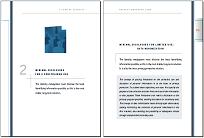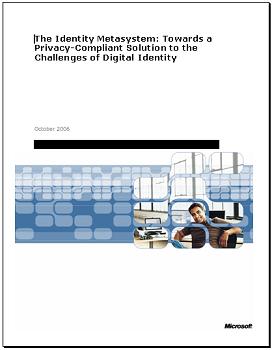When I was at the International Association of Privacy Professionals conference recently I was able to hear the multiply visionary Don Tapscott speak about where technology is going, and its relationship with business and society. He is an extraordinary speaker, with a staggering breadth. He seems to effortlessly integrate the disparate colliding tendencies and phenomena shaping our future. If you don't know of him, I'll turn to the Wikipedia, itself a manifestation of forces that form the subject of his latest book:
Mr. Tapscott has authored or co-authored eleven widely read books on the application of technology in business. His new book, co-authored with Anthony Williams is [WIKINOMICS: How Mass Collaboration Changes Everything] (Portfolio, December 2006).
His penultimate book, co-authored with David Ticoll, is THE NAKED CORPORATION: How the Age of Transparency Will Revolutionize Business (Free Press, October 2003). The Naked Corporation describes how corporate transparency, accountability, and stakeholder relationships are the new frontier for competitive innovation.
He has also co-authored, DIGITAL CAPITAL: Harnessing the Power of Business Webs. This best seller describes how business webs are replacing the traditional model of the firm and changing the dynamics of wealth creation and competition.
There are many other important books – including “Paradigm Shift”…
But at the conference, Don spoke right after Anne Cavourkian, with whom, ten years ago, he had written, “Who knows? Safeguarding your privacy in a networked world.” With visionary chagrin, he joked that while he still thought it was a good book, the timing couldn't have been worse. There it is in a nutshell: the visionary's dilemma.
Don went on to say:
In the book we argued that big brother's always been a problem. But. because of the growing proliferation of networked computers, and databases connected to them, there's an emerging problem, called little brother.
In the old days, information was kept in filing cabinets, and filing cabinets don't communicate with each other very well.
But when information becomes bits, flying around through networks of sand and air, information starts to communicate, and as we go through life, as this becomes the basis for work, learning and entertainment and healthcare and human discourse, we leave a trail of digital crumbs, and these crumbs are being collected, on this vast network of networks, into a sort of virtual you, a mirror image of yourself, and your virtual you may know more about you than you do in some areas, because you can't remember, say, what movie you watched fourteen months ago.
The little brother problem is key to the work I've been doing on this blog. And Don, who had been told about the Laws of Identity by Dr. Cavourkian, was kind enough to give me permission to post his full speech. The mp3 version is here. (Update: changed from wma).







 Remember the huge ID cards report row last year between the government and the LSE's Simon Davies? The Home Secretary Charles Clarke (remember him?) went on the Today programme and accused Davies of fabricating evidence for the LSE's report on the ID cards. Ministers from Blair down took turns inside and outside Parliament to rubbish and defame him at every possible opportunity. It turned very nasty and Davies for the remainder of the year was very much Enemy Number One for the Home Office.
Remember the huge ID cards report row last year between the government and the LSE's Simon Davies? The Home Secretary Charles Clarke (remember him?) went on the Today programme and accused Davies of fabricating evidence for the LSE's report on the ID cards. Ministers from Blair down took turns inside and outside Parliament to rubbish and defame him at every possible opportunity. It turned very nasty and Davies for the remainder of the year was very much Enemy Number One for the Home Office.
 Ontario's information and privacy commissioner says she supports a new global online identity system to protect consumers.
Ontario's information and privacy commissioner says she supports a new global online identity system to protect consumers.